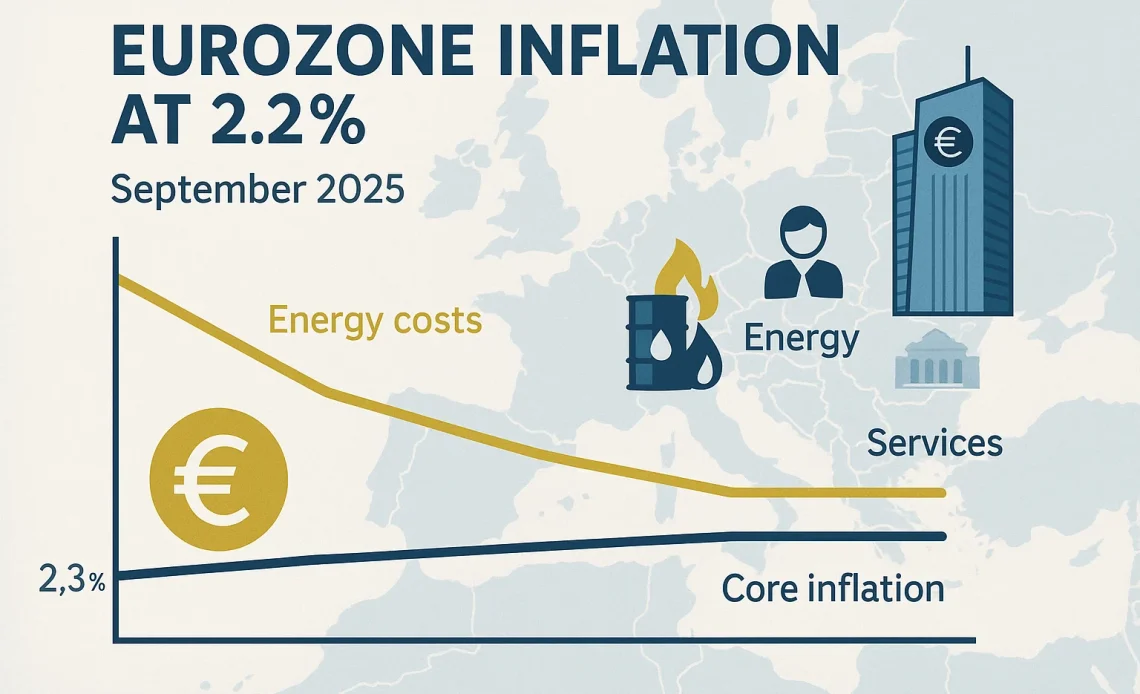
Eurozone inflation nudged above the European Central Bank’s target for the first time since April, hitting 2.2% in September.
This marks a significant moment as price pressures, particularly in services and energy, show signs of persistence.
Despite this, the ECB is poised to keep interest rates steady at 2% for the third straight meeting later this month.
Market watchers see the data as a clear sign that the central bank’s cycle of cutting rates is likely over for now.
ECB President Christine Lagarde remains confident inflation is at a manageable level, while traders weigh the impact of recent EU–US trade developments.
Eurozone inflation: Energy and core inflation dynamics
The recent rise in inflation was largely a result of a slowdown in the decline of energy prices, rather than a widespread jump in overall consumer prices.
Energy costs still fell, but only by 0.4% in September, a notable change from the sharper 2% drop seen in August. This smaller dip in energy prices was enough to nudge headline inflation slightly upward.
At the same time, core inflation, which strips out the often-volatile food and energy sectors, remained steady at 2.3% for the fifth month running.
This steady reading is important because core inflation reflects underlying price trends, free from temporary swings in energy or food costs.
The continued stability in core inflation indicates that, while inflationary pressures persist in services and other goods, they remain measured and contained.
These contrasting dynamics, slowing energy price declines, boosting headline inflation, paired with steady core inflation, highlight why the European Central Bank is taking a cautious approach.
It suggests that while headline numbers may fluctuate, the underlying economy is experiencing steady but controlled inflationary pressures, justifying the decision to keep interest rates unchanged for now.
Market expectations and derivatives pricing
Analysts and other financial market observers are expected to dial back rate cut expectations following the recent inflation numbers.
As per the derivatives price data, there is less than a 50% chance of another quarter-point cut over the next year.
The developments highlight new market sentiment, where the ECB’s easing cycle seems to be over and a more cautious stance is expected in the coming months.
The euro has responded to this changing outlook by holding steady and even nudging a bit higher, trading recently around $1.175 against the US dollar.
The quick change suggests that the market was already predicting a higher inflation and sees the ECB’s current rates appropriate for the economic context of Europe.
In the upcoming months, market sentiment is expected to be shaped by multiple factors, including steady core inflation readings, slower energy price declines, and the impact of trade developments such as the EU–US deal.
The factors are enough to indicate that the ECB will maintain a cautious stance and remain vigilant for risks that might push inflation off course.
The post Eurozone inflation creeps above target, strengthening ECB’s hold decision appeared first on Invezz






